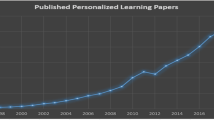Abstract
The task density of the data processing platform is increasing, and effective online task scheduling directly determines the business flexibility of the data processing platform. This article starts with the remarkable dynamic characteristics of 5G cellular networks, creates an adaptive environment to optimize online task scheduling, and designs the workload characteristics of data processing and computing tasks. On this basis, based on the 5G mobile communication network programming model and the operating and functional principles of its supporting system, the actual structure and field of online task scheduling work templates have been developed and designed. In addition, this article is developing a technology-based, non-intrusive online task scheduling program that can perform detailed real-time detection of the actual implementation of online task scheduling. In this paper, 5G cellular network is used to further reduce the service cache location of online content, and collaborative English learning and deployment at the edge of the network closer to the end user can further reduce network delay, which is important for improving mobile network communication and improving the efficiency of network content distribution. This article creates a model for online collaborative learning of college English on a 5G cellular network and analyzes the data based on experiments with comparative models to improve their self-confidence and interpersonal skills, and these skills can help improve students' language skills.




Similar content being viewed by others
Data availability
Data will be made available on request.
References
Baresi L, Denaro G, Quattrocchi G (2019) Big-data applications as self-adaptive systems of systems. In: 2019 IEEE international symposium on software reliability engineering workshops (ISSREW), pp 155–162
Casado R, Younas M (2015) Emerging trends and technologies in big data processing. Concurr Comput: Pract Exp 27(8):2078–2091
Chen J, Wang D, Zhao W (2013) A task scheduling algorithm for Hadoop platform. J Comput 8(4):929–936
David N, Sendik O, Messer H, Alpert P (2015) Cellular network infrastructure: the future of fog monitoring? Bull Am Meteor Soc 96(10):1687–1698
Israr A, Yang Q, Li W, Zomaya AY (2021) Renewable energy powered sustainable 5G network infrastructure: Opportunities, challenges and perspectives. J Netw Comput Appl 175:102910
Kabalci Y (2019) 5G mobile communication systems: fundamentals, challenges, and key technologies. In: Smart grids and their communication systems. Springer, Singapore, pp 329–359
Kos A, Tomažič S, Salom J, Trifunovic N, Valero M, Milutinovic V (2015) New benchmarking methodology and programming model for big data processing. Int J Distrib Sens Netw 11(8):271752
Lai WK, Chen YU, Wu TY, Obaidat MS (2014) Towards a framework for large-scale multimedia data storage and processing on Hadoop platform. J Supercomput 68(1):488–507
Lee W, Suh ES, Kwak WY, Han H (2020) Comparative analysis of 5g mobile communication network architectures. Appl Sci 10(7):2478
Lee W, Na T, Kim J (2019) How to create a network slice? A 5G core network perspective. In: 2019 21st international conference on advanced communication technology (ICACT), pp 616–619
Li Z (2021) Simulation of English education translation platform based on web remote embedded platform and 5G network. Microprocess Microsyst 81:103775
She X, Lv T, Liu X (2017) The pruning algorithm of parallel shared decision tree based on Hadoop. In: 2017 10th International symposium on computational intelligence and design (ISCID), vol 2, pp 480–483
Ullah F, Babar MA, Aleti A (2022) Design and evaluation of adaptive system for big data cyber security analytics. Expert Syst Appl 207:117948
Zhang L (2021) Analysis of English teaching mode in big data environment based on hadoop cloud platform. J Phys: Conf Ser 1992(2):022165
Funding
This article is sponsored by a higher education reform program titled “Innovative research of mixed teaching mode of language and literature courses based on output-oriented method” (2019JSJG277).
Author information
Authors and Affiliations
Corresponding author
Ethics declarations
Conflict of interest
The authors declare that they have no conflict of interests.
Ethical approval
This article does not contain any studies with human participants performed by any of the authors.
Additional information
Publisher's Note
Springer Nature remains neutral with regard to jurisdictional claims in published maps and institutional affiliations.
Rights and permissions
Springer Nature or its licensor (e.g. a society or other partner) holds exclusive rights to this article under a publishing agreement with the author(s) or other rightsholder(s); author self-archiving of the accepted manuscript version of this article is solely governed by the terms of such publishing agreement and applicable law.
About this article
Cite this article
Guo, S. Online task scheduling and English online cooperative learning based on 5G mobile communication network. Soft Comput 27, 7605–7614 (2023). https://doi.org/10.1007/s00500-023-08137-5
Accepted:
Published:
Issue Date:
DOI: https://doi.org/10.1007/s00500-023-08137-5




